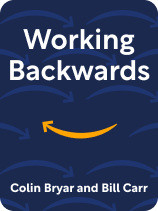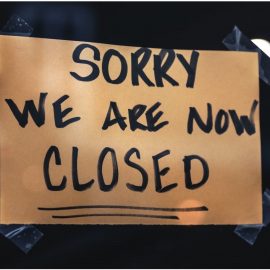

This article is an excerpt from the Shortform book guide to "Working Backwards" by Colin Bryar and Bill Carr. Shortform has the world's best summaries and analyses of books you should be reading.
Like this article? Sign up for a free trial here.
What is a product development proposal, and what is its purpose? How does Amazon use product development proposals?
The product development proposal, or PDP, is a two-part document including a hypothetical press release and frequently asked questions that you create before developing a new product. By looking at how Amazon uses the PDP, you can get a sense of good product development processes.
Read on to see what a good product development proposal looks like and how it is used.
About the Product Development Proposal
The Product Development Proposal (PDP) is a type of document Amazon uses to apply the guiding principle of prioritizing the customer experience when coming up with new product ideas. Any team with an idea for a new customer-facing product must create a PDP before starting work on it.
The document consists of two parts: a press release and a set of frequently asked questions. (For this reason, Amazon refers to the Product Development Proposal as the “PR/FAQ.”)
Section #1: The Press Release
Amazon employees begin writing the PDP by imagining the product they want to create in its final form and writing a hypothetical press release unveiling this new product to the public. This press release describes what the product is and the range of benefits it offers to the customer. Articulating a clear vision of the final customer experience they want to deliver is a way for the team to work backwards and figure out what they need to do to get there.
(Shortform note: If you start the product development process by writing a press release, be careful not to become attached to that specific vision until you’re sure it’s something people want. Refusing to compromise on the customer experience and working backwards only works if that customer experience is truly in demand. In The Mom Test, Rob Fitzpatrick explains how to accurately gauge this demand. He warns that whenever you pitch a product idea to someone, they’re likely to give you positive feedback even if they wouldn’t buy it, lying out of courtesy and lack of self-awareness. Therefore, conduct extensive customer research to ensure there’s a market for your product, but avoid directly pitching it to anyone.)
Section #2: Frequently Asked Questions
The second half of the Proposal is a list of answers to “frequently asked questions”—more accurately, these are questions that the writer anticipates their coworkers and customers will have about the product. In answering these questions, the writer explains how much they expect it will cost to develop their hypothetical product, the challenges the team needs to overcome to do so, and any other information they think executives will need before greenlighting the product.
(Shortform note: By asking your own “frequently asked questions” and then answering them, you’re essentially creating a Socratic dialogue. This technique has its roots in ancient Greece—Plato presented his philosophical ideas in the form of a discussion between his teacher Socrates and his students. In his writings, Plato describes Socrates repeatedly asking students questions about complex philosophical issues to challenge their existing assumptions and lead to more truthful insights. In the same way, challenging your proposal with questions will likely result in stronger logic: You’re unlikely to propose a product that’s unrealistically expensive or impossible to make if you rigorously question your logic beforehand.)
Getting Your Proposal Approved
After a team creates a PDP, they organize a meeting with other relevant team leaders and present the document to them. After this meeting, the team uses the feedback and criticism they receive to revise and refine the Proposal, then present it to the executives with the power to approve it. The executives may then approve the product for development, give feedback and request further refinement of the Proposal, or (if they determine it to be low priority) shoot down the idea.
By mandating a PDP for every new product, Amazon ensures that many experienced team members deeply consider the potential value and risks of the product before they devote any resources to developing it. This ensures that the company only invests in feasible product ideas that are certain to deliver a valuable experience to the customer.
| Innovation Through Wasteful Work By mandating that every new product be thoroughly considered, revised, and approved by a multitude of stakeholders, Amazon intends to ensure that they don’t waste any resources chasing dead ends. However, in Range, David Epstein contends that discovering the most valuable innovations requires wild experimentation and plenty of what seems like “wasted” effort. This is because doing work with no clear purpose or value can lead you to do things no one has done before, resulting in new discoveries. For example, Epstein describes how the physicist Andre Geim regularly schedules “Friday night experiments,” time at work set aside to pursue whatever ideas he thinks are fun or interesting. Sometimes, his discoveries are fairly useless—for instance, discovering that the water in a frog’s body is magnetic enough to make it levitate using magnets. Other times, his discoveries are world-changing—after discovering that Scotch tape could strip away extremely thin layers of graphite, he investigated further and discovered a way to isolate graphene, a nanomaterial that’s two hundred times stronger than steel. This eventually earned him the Nobel Prize. |

———End of Preview———
Like what you just read? Read the rest of the world's best book summary and analysis of Colin Bryar and Bill Carr's "Working Backwards" at Shortform.
Here's what you'll find in our full Working Backwards summary:
- How any company can grow the same way Amazon did
- How Amazon rapidly scaled its startup into an online empire
- The four tools Amazon’s workers use for strategy development






